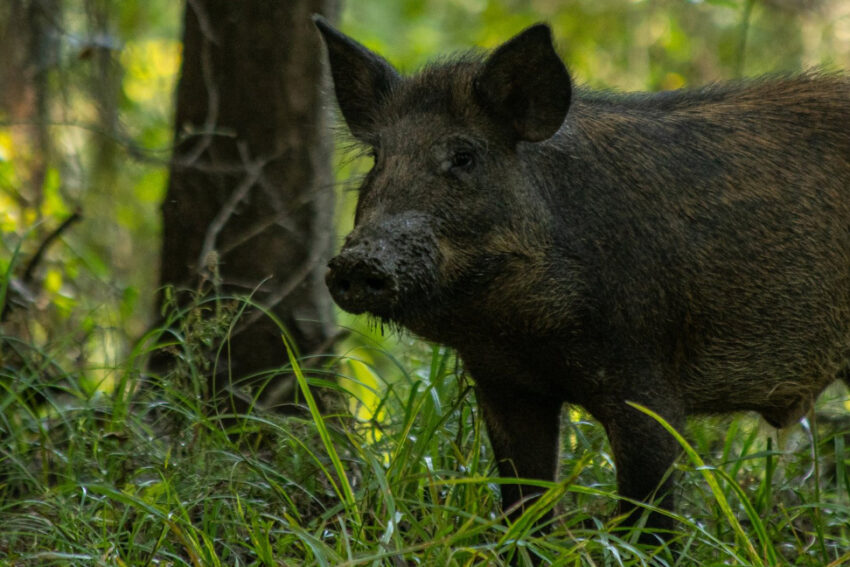Wildlife
We offer a wide range of resources, publications and events to provide landowners, conservationists and hunters an array of information regarding wildlife, including white-tailed deer, dove, quail, waterfowl and turkeys as well as non-native species like feral hogs as well as habitat and population management.
Related Department: Animal Science, Rangeland, Wildlife and Fisheries Management

Feral Hog Management

Learn About
Wildlife
Publications
Programs
All Resources on Wildlife
- Publication
Nutria are large, semi-aquatic rodents resembling beavers or muskrats. They eat desirable vegetation, girdle trees, and burrow into banks and dams. The biological, reproductive, and behavioral characteristics of nutria are listed, as well as control methods. (4 pages)
- Publication
Excessive numbers of pigeons in cities, suburbs, or parks can create a nuisance and a health threat. Control methods include roost elimination, noise-making devices, traps, poisons, and shooting. (2 pages)
- Publication
The small English or house sparrow is common in urban and suburban areas. Their droppings kill vegetation and damage car finishes. They also carry diseases, parasites, and insects. This publication lists control methods and control restrictions. (2 pages)
- Publication
Roosting birds include blackbirds, starlings, grackles, and cowbirds. Like pigeons and sparrows, their droppings cause problems, and they carry diseases. This publication describes various methods of control. (4 pages)
- Publication
Several species of woodpeckers, flickers, and sapsuckers live in Texas. They can be destructive when they drill holes in wooden structures. This publication discusses various controls and alternative methods for eliminating noise and damage. (4 pages)
- Publication
Dens or holes dug by badgers can be a hazard to livestock, horseback riders, and machinery. Badgers can be controlled by trapping, shooting, habitat modification, or frightening them away with bright lights. (2 pages)
- Publication
Some wildlife diseases can be transmitted to humans. This leaflet explains the causes and symptoms of rabies, giardiasis, bubonic plague, Rocky Mountain spotted fever, Lyme disease, tularemia, leptospirosis, and histoplasmosis. (4 pages)
- Publication
This publication discusses the distribution of feral hogs as well as their habitats, food habits, and reproduction. Feral hogs can damage crops and kill lambs and kid goats. Methods of control are also explained. (4 pages)
- Publication
This series aims to help readers manage forage quality and quantity, improve grazing profitability, manage stocking rate, and how to use these concepts on their land. This publication introduces the idea of grazing and the basics of regenerative management. (11 pages)
- Publication
This publication discusses rabies, a diseases that skunks can transmit, and the damage that skunks can cause.
